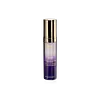What's inside
What's inside
 Key Ingredients
Key Ingredients

 Benefits
Benefits

 Concerns
Concerns

No concerns
 Ingredients Side-by-side
Ingredients Side-by-side

Water
Skin ConditioningPropanediol
SolventPhenoxyethanol
PreservativeSodium Polyacrylate
AbsorbentEthylhexylglycerin
Skin ConditioningPrunus Amygdalus Dulcis Seed Extract
Skin ConditioningAcrylates/C10-30 Alkyl Acrylate Crosspolymer
Emulsion StabilisingSodium Hydroxide
BufferingFucus Vesiculosus Extract
EmollientDisodium EDTA
Sodium Hyaluronate
HumectantSodium Carboxymethyl Betaglucan
Parfum
MaskingCaprylic/Capric Triglyceride
MaskingHexylene Glycol
EmulsifyingTocopheryl Acetate
AntioxidantCaprylyl Glycol
EmollientPistacia Lentiscus Gum
MaskingXanthan Gum
EmulsifyingBenzyl Salicylate
PerfumingHexyl Cinnamal
PerfumingLinalool
PerfumingCoumarin
PerfumingWater, Propanediol, Phenoxyethanol, Sodium Polyacrylate, Ethylhexylglycerin, Prunus Amygdalus Dulcis Seed Extract, Acrylates/C10-30 Alkyl Acrylate Crosspolymer, Sodium Hydroxide, Fucus Vesiculosus Extract, Disodium EDTA, Sodium Hyaluronate, Sodium Carboxymethyl Betaglucan, Parfum, Caprylic/Capric Triglyceride, Hexylene Glycol, Tocopheryl Acetate, Caprylyl Glycol, Pistacia Lentiscus Gum, Xanthan Gum, Benzyl Salicylate, Hexyl Cinnamal, Linalool, Coumarin
Water
Skin ConditioningMethyl Gluceth-10
EmulsifyingPhenoxyethanol
PreservativeAcrylates/C10-30 Alkyl Acrylate Crosspolymer
Emulsion StabilisingCaprylyl Glycol
Emollient1,2-Hexanediol
Skin ConditioningPullulan
Dimethylmethoxy Chromanyl Palmitate
Skin ConditioningHexylene Glycol
EmulsifyingNannochloropsis Oculata Extract
HumectantDisodium EDTA
Dimethylmethoxy Chromanol
AntioxidantXanthan Gum
EmulsifyingAcetyl Tetrapeptide-5
HumectantSodium Hyaluronate
HumectantSodium Hydroxide
BufferingWater, Methyl Gluceth-10, Phenoxyethanol, Acrylates/C10-30 Alkyl Acrylate Crosspolymer, Caprylyl Glycol, 1,2-Hexanediol, Pullulan, Dimethylmethoxy Chromanyl Palmitate, Hexylene Glycol, Nannochloropsis Oculata Extract, Disodium EDTA, Dimethylmethoxy Chromanol, Xanthan Gum, Acetyl Tetrapeptide-5, Sodium Hyaluronate, Sodium Hydroxide
Ingredients Explained
These ingredients are found in both products.
Ingredients higher up in an ingredient list are typically present in a larger amount.
Acrylates/C10-30 Alkyl Acrylate Crosspolymer is a synthetic polymer. It is used to thicken and improve the texture of products. Due to its properties, it can prevent water and oil ingredients from separating.
Caprylyl Glycol is a humectant and emollient, meaning it attracts and preserves moisture.
It is a common ingredient in many products, especially those designed to hydrate skin. The primary benefits are retaining moisture, skin softening, and promoting a healthy skin barrier.
Though Caprylyl Glycol is an alcohol derived from fatty acids, it is not the kind that can dry out skin.
This ingredient is also used as a preservative to extend the life of products. It has slight antimicrobial properties.
Learn more about Caprylyl GlycolDisodium EDTA plays a role in making products more stable by aiding other preservatives.
It is a chelating agent, meaning it neutralizes metal ions that may be found in a product.
Disodium EDTA is a salt of edetic acid and is found to be safe in cosmetic ingredients.
Learn more about Disodium EDTAHexylene Glycol is a surfactant. Glycols are a class of alcohols. Hexylene Glycol is a surfactant and emulsifier.
As a surfactant, Hexylene Glycol helps gather dirt and oil on your skin to be washed away.
As an emulsifier, Hexylene Glycol helps keep water and oil together. This prevents them from separating in a product. Hexylene Glycol also thins out the texture of a product by lessening viscosity.
Hexylene Glycol has a small molecular weight.
Learn more about Hexylene GlycolPhenoxyethanol is a preservative that has germicide, antimicrobial, and aromatic properties. Studies show that phenoxyethanol can prevent microbial growth. By itself, it has a scent that is similar to that of a rose.
It's often used in formulations along with Caprylyl Glycol to preserve the shelf life of products.
Sodium Hyaluronate is hyaluronic acid's salt form. It is commonly derived from the sodium salt of hyaluronic acid.
Like hyaluronic acid, it is great at holding water and acts as a humectant. This makes it a great skin hydrating ingredient.
Sodium Hyaluronate is naturally occurring in our bodies and is mostly found in eye fluid and joints.
These are some other common types of Hyaluronic Acid:
Learn more about Sodium HyaluronateSodium Hydroxide is also known as lye or caustic soda. It is used to adjust the pH of products; many ingredients require a specific pH to be effective.
In small amounts, sodium hydroxide is considered safe to use. However, large amounts may cause chemical burns due to its high alkaline.
Your skin has a natural pH and acid mantle. This acid mantle helps prevent harmful bacteria from breaking through. The acid mantle also helps keep your skin hydrated.
"Alkaline" refers to a high pH level. A low pH level would be considered acidic.
Learn more about Sodium HydroxideWater. It's the most common cosmetic ingredient of all. You'll usually see it at the top of ingredient lists, meaning that it makes up the largest part of the product.
So why is it so popular? Water most often acts as a solvent - this means that it helps dissolve other ingredients into the formulation.
You'll also recognize water as that liquid we all need to stay alive. If you see this, drink a glass of water. Stay hydrated!
Learn more about WaterXanthan gum is used as a stabilizer and thickener within cosmetic products. It helps give products a sticky, thick feeling - preventing them from being too runny.
On the technical side of things, xanthan gum is a polysaccharide - a combination consisting of multiple sugar molecules bonded together.
Xanthan gum is a pretty common and great ingredient. It is a natural, non-toxic, non-irritating ingredient that is also commonly used in food products.
Learn more about Xanthan Gum